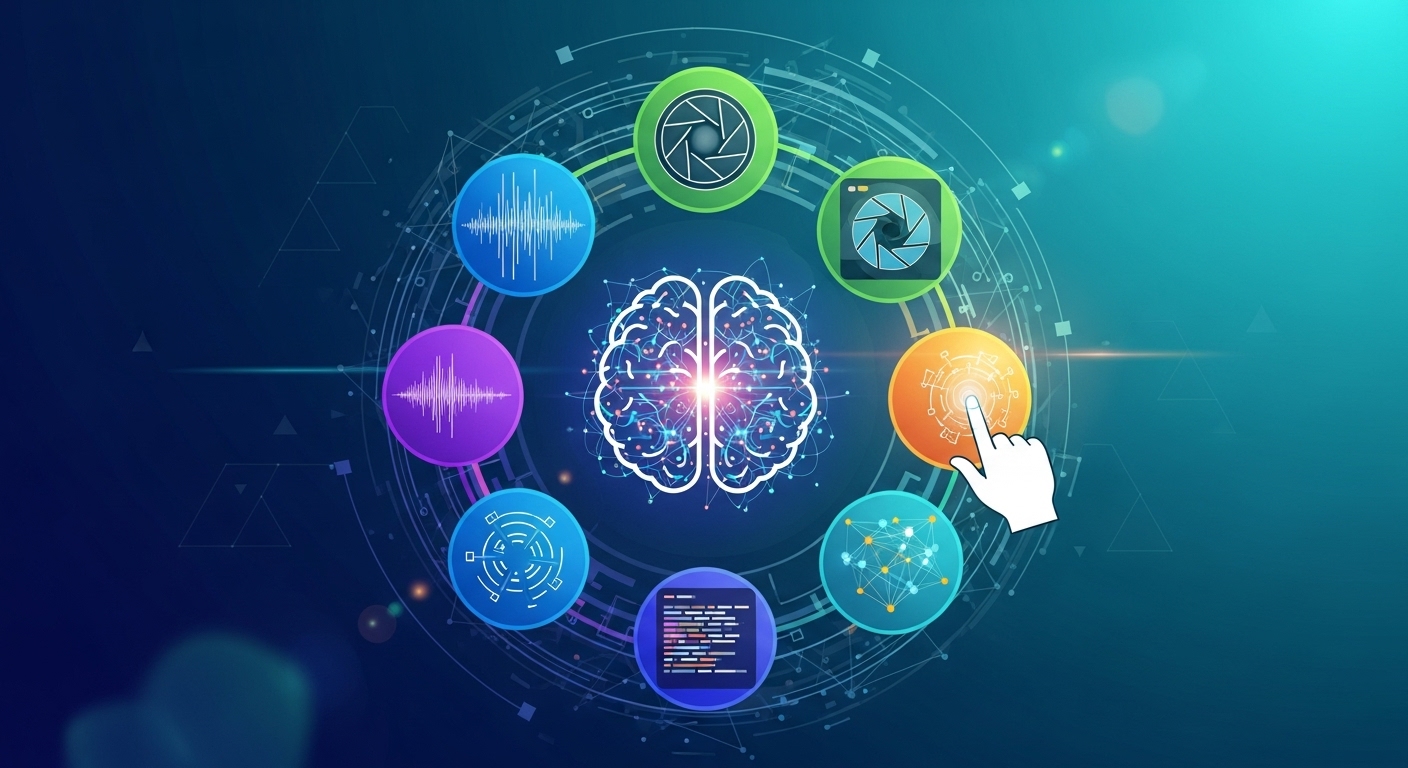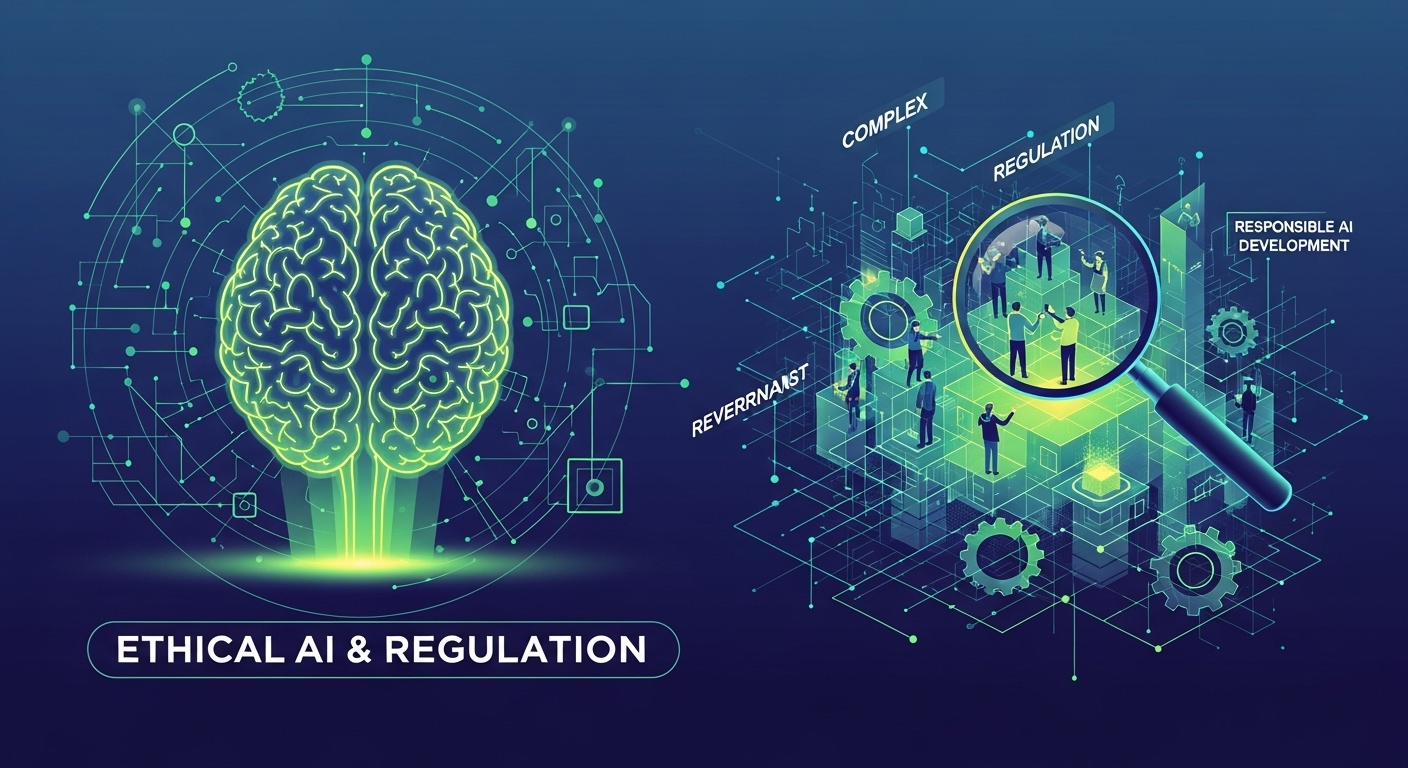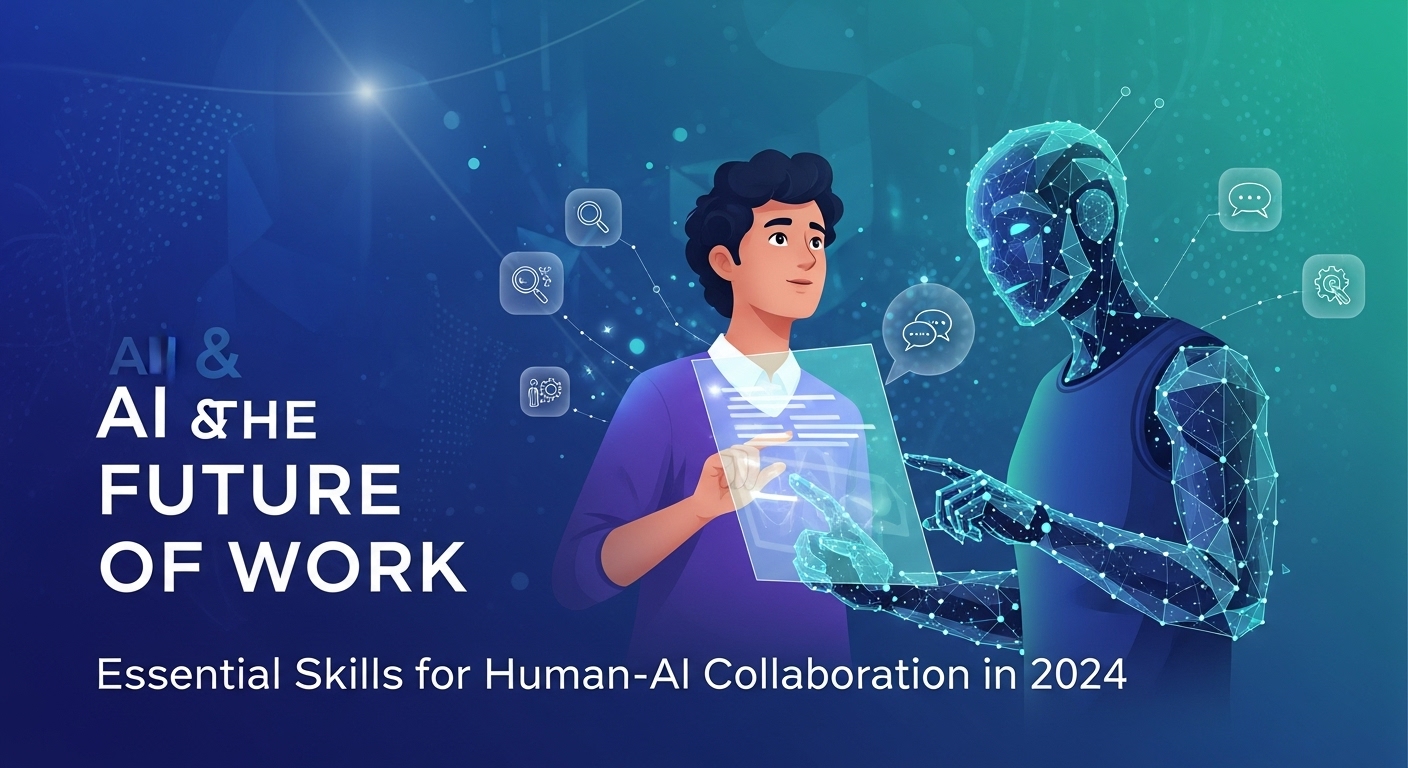The Dawn of a New AI Era: Beyond Words
For years, our interactions with artificial intelligence have been largely conversational, confined to the realm of text. We’ve marveled at chatbots that can write poetry, draft emails, and answer complex questions. But this text-centric view of AI is rapidly becoming a relic of the past. We are standing on the precipice of a new revolution, one where AI begins to perceive, understand, and interact with the world in a way that is far more human-like. This is the era of multimodal AI, the most significant shift in ai & tech trends we’ve seen in years. It’s an evolution from an AI that just reads to an AI that sees, listens, and comprehends the rich, layered tapestry of human communication.
Think about how we, as humans, experience reality. We don’t just process text; we see images, hear sounds, watch videos, and integrate all these streams of information seamlessly. Multimodal AI aims to replicate this ability, creating systems that can process and interpret a combination of data types—text, images, audio, and even video—simultaneously. This isn’t just an incremental upgrade; it’s a fundamental paradigm shift that is unlocking capabilities we once thought were the stuff of science fiction.
What Exactly is Multimodal AI?
At its core, multimodal AI is the practice of building AI models that can understand and reason about information from multiple modalities. Instead of having one AI that’s an expert in images and another that’s an expert in language, a multimodal system can understand the intricate relationship between them. It’s the difference between describing a picture of a cat and an AI actually understanding that the word ‘cat’ in a prompt corresponds to the furry, four-legged creature in an image.
Moving Beyond Single-Mode Systems
Traditional AI models, often called unimodal systems, are specialists. A large language model (LLM) like early versions of GPT is a master of text. A computer vision model like ResNet is a prodigy at identifying objects in photos. While incredibly powerful in their own right, they have inherent limitations. A language model can’t tell you if a shirt in a photo is blue, and a vision model can’t understand the sarcastic caption written beneath it. They each perceive only a slice of reality. Multimodal AI breaks down these silos, creating a more holistic and context-aware intelligence.
The Power of Synergy: Creating Deeper Understanding
The true magic of multimodal AI lies in synergy. When different data types are combined, the whole becomes greater than the sum of its parts. An AI that can watch a video, listen to the dialogue, and read the on-screen text gains a level of comprehension that is exponentially deeper than a system analyzing any one of those elements in isolation. It can understand tone, context, visual gags, and the emotional undercurrent of a scene. This fusion allows the AI to build a richer, more robust internal representation of the world, much like how our senses work together to inform our perception and decision-making.
The Driving Forces Behind the Multimodal Revolution
This leap forward isn’t happening in a vacuum. A confluence of technological advancements has paved the way for the rise of multimodal AI, making it one of today’s most exciting ai & tech trends.
Advances in Neural Network Architecture
The development of sophisticated neural network architectures, particularly the Transformer model, has been a game-changer. Originally designed for natural language processing, researchers have ingeniously adapted Transformers to process other data types, including images and audio. By tokenizing images and sounds in a way that’s similar to words in a sentence, these models can learn the complex patterns and relationships between different modalities within a single, unified framework.
The Explosion of Digital Data
We live in an age of data abundance. The internet is a colossal, ever-expanding repository of images, videos, podcasts, and text. Every day, billions of new data points are created. This massive dataset is the lifeblood of multimodal AI, providing the raw material needed to train these complex models. Platforms like YouTube, Instagram, and TikTok are, in effect, vast training grounds where AI can learn the intricate connections between visuals, sounds, and language.
Leaps in Computational Power
Training a multimodal AI model is an incredibly resource-intensive task. It requires immense computational power to process petabytes of data and adjust billions of parameters. The widespread availability of powerful Graphics Processing Units (GPUs) and the scalability of cloud computing platforms have made it feasible for researchers and companies to build and train these gargantuan models, a task that would have been impossible just a decade ago.
Real-World Applications: Where Multimodal AI is Making an Impact
This isn’t just a theoretical concept; multimodal AI is already being deployed in a variety of applications that are changing how we interact with technology.
Enhanced Search and Content Discovery
Remember when search was just a text box? Those days are over. Tools like Google Lens allow you to search using your camera. You can point your phone at a plant to identify it or at a piece of furniture to find where to buy it. This is multimodal AI in action, seamlessly blending visual input with vast textual and image databases to give you an answer. The future of search will be a conversation where you can show, tell, and ask in any combination you like.
A New Renaissance in Creative Content Generation
Text-to-image generators like DALL-E, Midjourney, and Stable Diffusion have captured the public imagination. By simply describing a scene in words, anyone can create stunning, original artwork. This is a direct result of models that have learned the deep relationship between language and visual concepts. The next frontier is text-to-video, with models like Sora demonstrating the ability to generate entire video clips from a simple text prompt, heralding a new era for filmmaking, marketing, and content creation.
Revolutionizing Accessibility
Multimodal AI holds immense promise for making the digital world more accessible. For individuals with visual impairments, AI can now describe the contents of an image or a video scene in rich detail. For those who are deaf or hard of hearing, AI can provide real-time transcription, translation, and even summarization of audio and video content. This technology is breaking down barriers and creating a more inclusive online experience for everyone.
Smarter Autonomous Systems and Robotics
For a self-driving car or a warehouse robot to operate safely and effectively, it needs to understand its environment in a holistic way. It must process visual data from cameras, spatial data from LiDAR, and potentially audio cues from its surroundings. Multimodal AI is the brain that allows these systems to fuse this diverse sensory input into a coherent understanding of the world, enabling them to navigate complex, dynamic environments.
The Challenges and Ethical Considerations
As with any powerful technology, the rise of multimodal AI comes with significant challenges and ethical questions that we must address proactively.
Complexity, Cost, and Environmental Impact
Building and training these state-of-the-art models is extraordinarily expensive and requires specialized expertise. This creates a high barrier to entry, potentially concentrating power in the hands of a few large tech companies. Furthermore, the energy consumption required for these computations raises serious concerns about the environmental impact and carbon footprint of the AI industry.
Bias Amplification and Sophisticated Misinformation
AI models learn from the data they are trained on, and if that data contains human biases, the models will replicate and even amplify them. In a multimodal context, biases can be subtly interwoven across images and text, making them harder to detect and mitigate. Moreover, the ability to generate hyper-realistic images, audio, and video creates a powerful tool for creating convincing deepfakes and spreading misinformation on an unprecedented scale.
Conclusion: Get Ready for a More Intuitive Future
Multimodal AI is more than just another buzzword; it is a foundational shift that is reshaping the landscape of technology. By teaching machines to understand the world in the same rich, multi-layered way that we do, we are unlocking a future where our interactions with technology are more natural, intuitive, and intelligent. From creative expression to scientific discovery and accessibility, the applications are boundless. The journey is just beginning, and staying informed about these evolving ai & tech trends is crucial for navigating the incredible opportunities and challenges that lie ahead. The future isn’t just written; it’s seen, heard, and experienced. And AI is finally learning to do all three.


